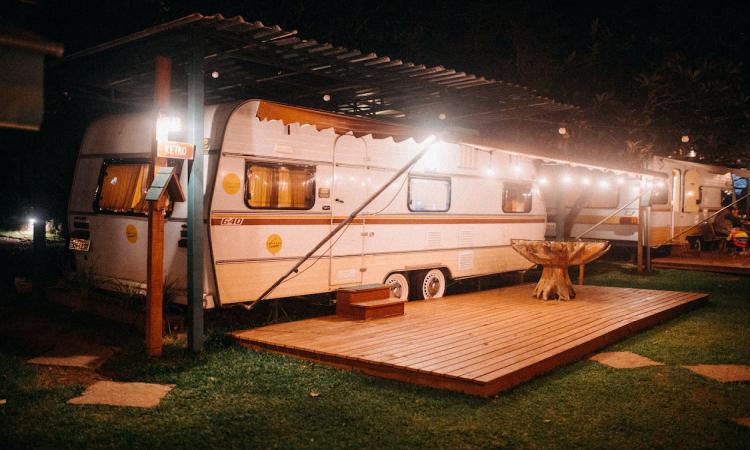 Introduction
Introduction
If you have been looking for a vintage caravan to restore, then you will see that there are many models on sale. You can find them at car shows and auctions or online, but before making that big purchase, you need to assess the vehicle’s condition first.
Assess the caravan’s structure
After you’ve assessed the caravan’s condition, you should evaluate its structure for any damage. This is important because a caravan that has suffered serious structural damage might be difficult or impossible to repair. If it’s possible to fix this kind of damage, determine how much it will cost. Whether you can afford to do the repairs or not will depend on the severity of the problem and whether you plan on keeping your caravan restored in its current condition (e.g., as a camper) or if you want a full restoration that includes updating all of its systems and making other improvements.
If any major structural work needs to be done, chances are good that this will throw off your budget as well as cause delays in getting started with restoration work until money becomes available again (which could take months). In addition, if major repairs are required then chances are good that selling your caravan at some point down the road may become necessary—and doing so before completing an entire restoration project could mean losing out on profits from selling an older camper whose value increases over time due to rarity alone!
Get replacement parts
There is a good chance that you will need to replace old, broken parts in your caravan. This can be expensive, and you will want to make sure that the replacement parts are affordable and easy to find like Sticky Flanges.
Checking the list of required parts and their prices is a good way to start this process. If there are any major differences between what’s needed for your model of caravan and what’s available on the market, it might be worthwhile looking into whether or not there’s a way of adapting another part or making do with an alternative solution altogether.
It’s also important that you have all the tools necessary for replacing these parts yourself; if not, then this should be factored into your budgeting process so as not to end up paying someone else more than necessary just because they have certain specialized knowledge or equipment on hand (or at least know how best where).
Prioritize suspension upgrades
- Check the suspension.
- Make sure the suspension is in good condition and there are no leaks or rust. If you can, take the caravan for a test drive to make sure it doesn’t sway from side to side as you take corners and don’t hear any strange noises when braking or turning. If there are issues with the suspension, make sure they’re fixed like caravan suspension upgrades in Brisbane before moving on with your restoration.
- Check the shock absorbers (located at each wheel). You’ll want them to be working correctly so that your car doesn’t bounce around while driving down bumpy roads, but also not too soft because this could cause wear-and-tear on other parts of your vehicle like its tires and axle bearings; if any of these parts aren’t functioning properly then they will need replacing, after all, that money spent fixing stuff up already. Once again: check everything before doing anything else.
Check the chassis
- Inspect the chassis for rust. This is one of the most important parts to inspect because it’s what holds together your caravan. Note any areas that are rusted and corroded, and make sure they’re not close to any components or other parts of the caravan (like gas storage tanks).
- Be sure to look at all sides of the chassis as well—it may have been damaged or dented in an accident, which you’ll want to know about before purchasing it.
- Also, check for signs of corrosion; this can happen if there was water damage after an accident or due to aging. Corrosion can be seen as rust spots on metal surfaces, so keep an eye out for these when checking out your vehicle’s chassis!
- Look for cracks in body panels like doors and windows; if these are present then a replacement will probably need sooner than later because they could fail unexpectedly due to stress caused by vibrations from driving down rough roads during travel time between campsites/resorts etc…
Look for rust
To restore an old caravan, you need to find one that is in good shape. That means checking it for rust.
Rust is a common problem with caravans, and it’s a sign of metal fatigue—the effect of water and oxygen on the metal over time. When you’re looking at potential restoration projects, pay attention to areas where there is likely to be moisture around the caravan (like underneath) as well as those that are difficult for people to reach (like inside cupboards). This will help you assess whether or not a particular project is worth pursuing.
Find a reliable dealer
Finding a reliable dealer is essential to the success of your restoration project. A good dealer like this caravan dealers in Adelaide will be able to provide you with a warranty and parts, accessories, and maintenance services. When shopping around for dealerships, it’s important that they have a solid reputation in the community and can be trusted by their customers.
Check the plumbing and electric
You have to check the plumbing and electric systems before you buy. Make sure there are no leaks, rust, or corrosion, this can be expensive to fix later. You should also check that the plumbing lines are in good condition (no dents or holes), as well as that all of the wiring is intact and not damaged or frayed. Check for damage to the fuse box and battery compartment before signing on any dotted lines.
Choose a high-quality caravan mover
The best way to move a caravan is by using a caravan mover like this electric jockey wheel caravan mover. These are specialized vehicles that are designed specifically for the task of transporting caravans. There are many different kinds of caravan movers, some more effective than others for this particular use. It is important to choose one that will work well with your particular needs and budget and not just any old model.
Choosing the right type of caravan mover
When choosing a caravan mover, it’s important to consider how you intend to use it, as well as things like size and weight capacity (which can vary from model to model) like Australian built caravans. You will also want to think about what kind of terrain you plan on driving over when transporting your vehicle if it’s gravel roads or rocky paths, then something with a four-wheel drive may be necessary (or at least helpful). Keep in mind though that there are several types available depending on what kind of road conditions exist where you live; if none do then maybe stick with something simpler so there won’t be any surprises when trying out new routes later down the line! But regardless, just remember these two main points: comfortability AND safety = success.
Inspect the doors and windows
When you inspect the doors and windows, look for cracks in the glass. Check to see if there is any rust around the hinges, as this can mean that there are holes through which water can enter and damage your caravan.
Check whether all of the seals are in place to stop water from penetrating gaps around door frames or windows. A lot of older caravans don’t have sealant on them anymore so make sure to replace these before getting started with restoration work.
Finally, check that all locks work correctly and consistently so that your belongings are safe inside!
Check for insulation issues
If you’re buying a vintage caravan, you’ll want to check that it has insulation. This will help keep the van cool in summer and warm in winter.
Insulation is also important because it makes cleaning much easier. If your caravan has no wall panels, then you can add insulation between them yourself with foam sheets or something similar.
Consider these factors when buying a caravan for restoration.
- Check the structure. When you’re buying a caravan for restoration, you’ll want to make sure it doesn’t have any major structural issues. If there are holes in the walls or roof, it may be best to pass on this particular model.
- Get replacement parts. Whether your goal is to restore the interior or overhaul its engine, getting replacement pieces can help to speed up your restoration process considerably.
- Prioritize suspension upgrades. As with many types of vehicles, if your restored caravan has poor suspension then it will drive like a roller coaster! Make sure that suspension upgrades are on top of your list when performing an overhaul on this type of vehicle before attempting anything else – otherwise, you risk destroying everything else that goes along with them (i.e., wheels and tires).
- Check out its chassis closely for rust spots which could potentially cause problems down the road if left unchecked.
Conclusion
Hopefully, we’ve given you a clearer idea of what to look for in an old caravan. If you can make the decision early on about whether or not you want to restore a caravan, then you should be able to save yourself some time and money. Otherwise, it can be very difficult to find parts and information on older vehicles as they have less documentation available online compared with newer models. You’ll also need more time to do research before purchasing one if your intention is just to go through the motions without actually doing anything with it afterward (which we don’t recommend).
Click here to visit- motorised jockey wheel




